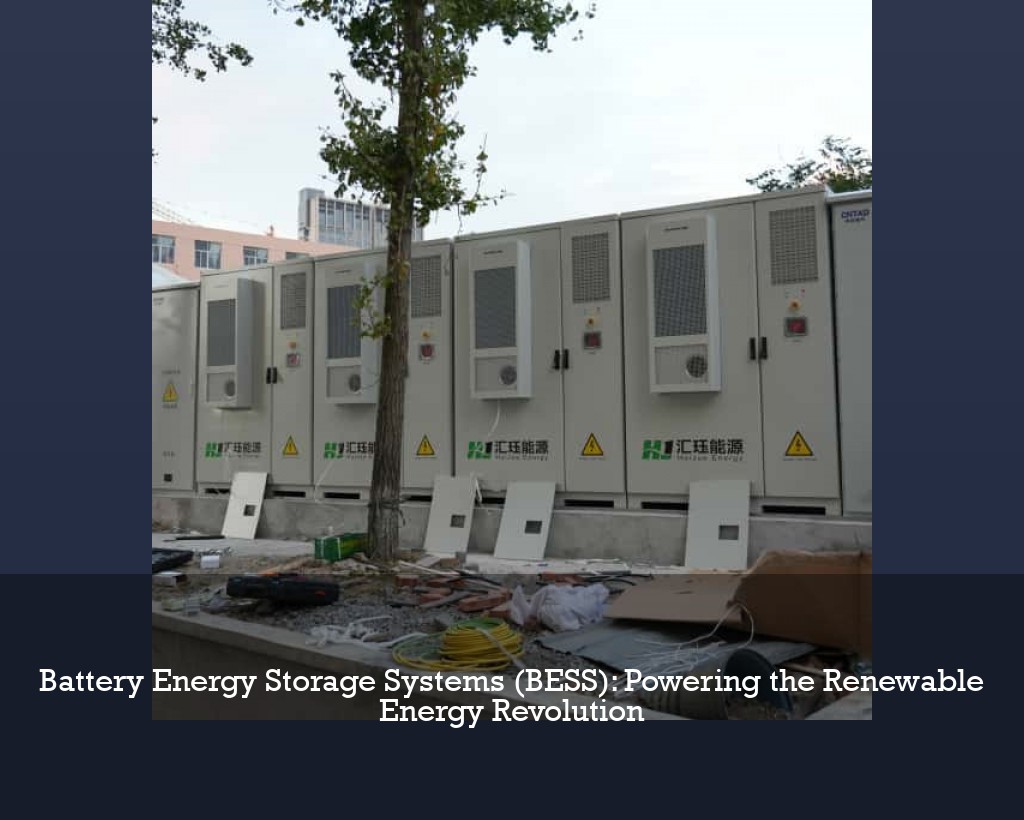Battery Energy Storage Systems (BESS): Powering the Renewable Energy Revolution
California's grid operators curtailed enough solar energy in 2023 to power 1.5 million homes for a year. That's the equivalent of throwing away 1.4 billion pounds of coal's energy potential. Meanwhile, Texas faced rolling blackouts during a winter storm while wind turbines stood frozen. This energy paradox - abundance vs. scarcity - lies at the heart of our renewable energy challenges.
Battery Energy Storage Systems (BESS): Powering the Renewable Energy Revolution

Table of Contents
Why Energy Storage Can't Wait?
California's grid operators curtailed enough solar energy in 2023 to power 1.5 million homes for a year. That's the equivalent of throwing away 1.4 billion pounds of coal's energy potential. Meanwhile, Texas faced rolling blackouts during a winter storm while wind turbines stood frozen. This energy paradox - abundance vs. scarcity - lies at the heart of our renewable energy challenges.
Enter Battery Energy Storage Systems (BESS). These technological marvels don't just store electrons; they're rewriting the rules of energy economics. The global BESS market, valued at $327.9 billion in 2022, is projected to grow at a staggering 26.57% CAGR through 2028. But numbers alone don't tell the whole story.
The Intermittency Trap
Ever wondered why your solar panels sit idle during cloudy days while your neighbor's wind turbine spins helplessly on calm nights? This mismatch between energy generation and consumption costs the global economy $9.6 billion annually in wasted renewable capacity. BESS acts as a temporal bridge, storing surplus energy when production peaks and releasing it when demand surges.
What Makes BESS Tick?
At its core, a modern BESS comprises three critical subsystems:
- Battery Management System (BMS) - The guardian angel monitoring cell voltages and temperatures
- Power Conversion System (PCS) - The multilingual translator between DC and AC power
- Energy Management System (EMS) - The strategic brain optimizing energy flows
But here's the kicker: The real magic happens in their integration. Take Sweden's Ingrid Capacity project - their 400MW BESS deployment achieved 98.7% round-trip efficiency by perfecting component synergy. That's like losing only 1.3 cents for every dollar you exchange between currencies!
Where BESS Is Changing the Game
From the sun-baked Australian outback to Germany's industrial heartland, BESS applications are as diverse as the climates they operate in:
Grid-Scale Revolution
California's Moss Landing facility - with its 1.6GWh capacity - can power 225,000 homes for four hours. That's not just backup power; it's reshaping entire energy markets through frequency regulation and capacity contracts.
Industrial Power Plays
A German cement plant slashed energy costs by 34% using BESS to shave peak demand charges. Their secret sauce? Combining arbitrage strategies with real-time price forecasting.
The Price We Pay for Clean Energy
Lithium-ion batteries have seen an 89% price drop since 2010, but installation costs still account for 40% of total BESS expenditures. The emerging "second-life" battery market could change this calculus - retired EV batteries now power 75% of Tokyo's 7-Eleven stores through BESS installations.
Tomorrow's Grid Starts Today
As APEC's new BESS standards demonstrate, the focus is shifting from mere deployment to smart integration. The next frontier? AI-driven EMS platforms that predict grid stress points 72 hours in advance, potentially reducing blackout risks by 63%.
But let's be real - no technology is a silver bullet. Supply chain bottlenecks and recycling challenges loom large. The cobalt in today's batteries could become the conflict mineral of tomorrow. That's why researchers are racing to develop iron-air and sodium-ion alternatives that promise both sustainability and scalability.
Related Contents

Battery Energy Storage Systems (BESS): Powering the Renewable Energy Revolution
Let's cut through the jargon: Battery Energy Storage Systems (BESS) are essentially giant power banks for our electrical grids. Imagine being able to store solar energy captured at noon to power your Netflix binge at midnight – that's BESS in a nutshell. These systems combine advanced batteries with smart management tech to store electricity when production exceeds demand and release it when needed.

Battery Energy Storage Systems (BESS): The Brain Behind Renewable Energy Revolution
Ever wondered why your solar panels stop working at night? Or why wind farms sometimes pay customers to take their excess electricity? The answer lies in energy storage - or rather, the lack of it. As of March 2025, over 30% of renewable energy generated worldwide gets wasted due to inadequate storage solutions. That's enough to power entire cities!

Battery Energy Storage Systems (BESS): The Brain Behind Renewable Energy Revolution
Ever wondered why your solar-powered neighborhood still needs fossil fuel backups? Battery Energy Storage Systems (BESS) hold the answer. As renewable energy capacity grew 95% globally from 2015-2023, we've hit an ironic bottleneck - the cleaner our grids become, the more unstable they get. Solar panels sleep at night. Wind turbines nap on calm days. This intermittency costs the U.S. power sector $120 billion annually in balancing services.

Battery Energy Storage Systems: Powering the Renewable Revolution
Let's cut through the jargon: A Battery Energy Storage System (BESS) is essentially a giant power bank for our electrical grid. Unlike your smartphone charger, these systems store enough juice to power entire neighborhoods – sometimes for days. when solar panels work overtime at noon, BESS hoards that extra energy like a squirrel with acorns, releasing it when everyone turns on their AC at 6 PM.

Battery Energy Storage Systems: Powering the Renewable Revolution
You've probably heard the stats: Global renewable energy capacity grew 50% faster last year than in 2022. But here's what nobody's telling you - intermittency causes 17% of generated solar energy to go wasted during peak production hours. That's where Battery Energy Storage Systems (BESS) become the unsung hero of our clean energy transition.
